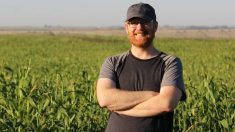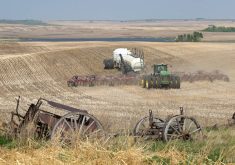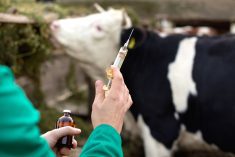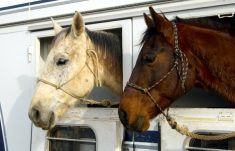Warnings have been issued about an anthrax outbreak in northern Alberta’s MacKenzie County amid hot, dry conditions that favour the disease.
Anthrax in grazing beef cows has been confirmed on four pastures and on a bison ranch. Since the first report on July 14, 31 cattle and three bison out of about 1,700 at-risk animals had died, a spokesperson for the provincial ag ministry said in an email.
No further deaths have been observed or reported since Aug. 2. All but two producers with about 115 animals have vaccinated their cattle for the disease since the outbreak. Others were in the vaccination process.
Read Also

Grazing ‘sweet spot’ boosts pasture performance
Timing-focused approach to pasture management touted to boost forage growth, livestock gains while also cutting farmer labour and inputs
Several isolated cases of anthrax occur nearly every year in Western Canada, according to Alberta Beef Producers. Animals contract the illness by consuming infected soil, feed or water, causing death within hours. Conditions that increase the risk of soil consumption — tillage, drought and close-cut hay — can also increase the risk.
“Initial symptoms include weakness, depression, difficulty breathing, a lack of co-ordination, recumbency and convulsions,” ABP said in a statement. “Due to the rapid nature of the disease, death is often the first sign producers will see.”
The group also said vaccinations are a good way to protect cattle from anthrax. The disease can be treated with antibiotics if caught in time, but antibiotics don’t provide long-term protection. Animals shouldn’t be treated with antibiotics within eight days of vaccination.
If anthrax infects a herd, carcasses must be handled with extreme caution to avoid additional contamination.
“The carcass should be carefully covered and secured to prevent scavengers from accessing the carcass and potentially spreading the anthrax spores further,” ABP said. “Incineration is the preferred disposal method. Consult your veterinarian or rural municipality to find out if incineration is legal in your area, and decide the best fuel to use, the safest way to manage the incineration, and the proper clean-up afterwards.”
Burial can be an option if burning isn’t possible, but spores can survive in soil for decades so the carcass must be buried quickly and deeply — six to eight feet. Use caution in wet areas and don’t bury a carcass in flood-prone zones. Record the co-ordinates of any burial or burn locations.
“Do not move or come into direct contact with the carcass unless absolutely necessary,” ABP said. “With no other choice, wear gloves and long sleeves, cover any open wounds, and thoroughly wash your hands and arms when you are done. Wash any exposed clothing and disinfect boots that may have contacted contaminated soil.”
In a statement, the province said anthrax presents little risk to the general public or to food safety.
“Alberta’s chief provincial veterinarian is working with local veterinarians to ensure affected animals are properly disposed of and producers employ other necessary herd management procedures to reduce the risk of spread.”















